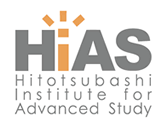A Dynamic Analysis of Climate Change Mitigation with Endogenous Number of Contributors: Loose vs Tight Cooperation
Abstract:
We propose a dynamic model of climate change abatement in which the number of contributors is endogenous and thus may differ between two modes of cooperation, namely, loose vs tight. In the tight mode of cooperation, each member is prescribed a specific target, whereas in the loose one, members choose their own abatement levels as Nash players. Conditions exist such that the incentive to free ride is lower and the number of contributors is higher in the loose cooperation framework, and this can lead to higher welfare, both in the steady state and along the transition path. Our theoretical results suggest that the loose coalition mode, such reflected in the spirit of the Paris International COP21 Conference on Climate Change, by attracting more participants, could turn out to be more effective in reducing emissions than the Kyoto Protocol.
| Report No.: | HIAS-E-92 |
|---|---|
| Author(s): | Loca Colombo(a) Paola Labrecciosa(b) Ngo Van Long(c), (d) |
| Affiliation: | (a) Deakin University (b) Monash University (c) McGill University (d) Hitotsubashi Institute for Advanced Study, Hitotsubashi University |
| Issued Date: | December 2019 |
| Keywords: | differential games; pollution abatement; climate change; mode of cooperation |
| JEL: | Q2, Q52, C73 |
| Links: | PDF, HERMES-IR, RePEc |











